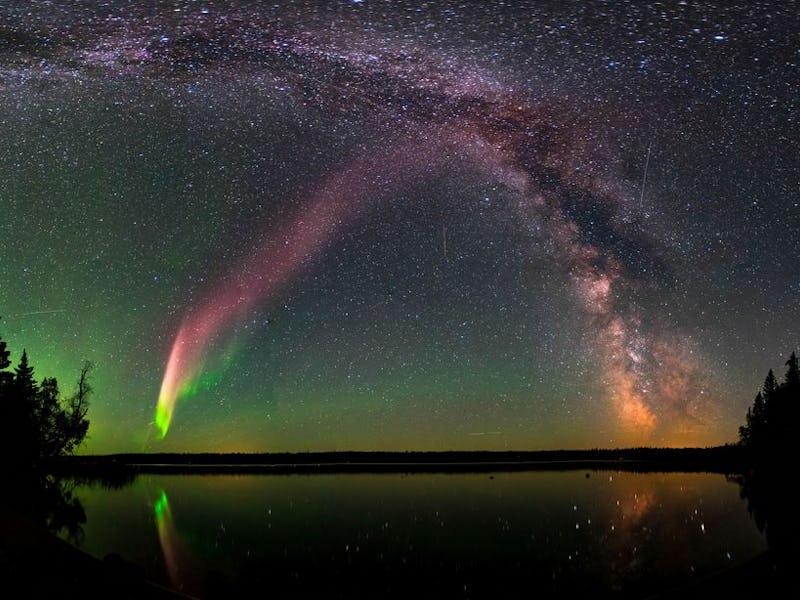
A mysterious light in the sky, called Steve, now has a twin sibling.
The European Space Agency’s trio of Swarm satellites recently discovered a river of plasma high in the upper reaches of Earth’s magnetic field, which rushes eastwards and lights up the polar sky with an ethereal purple glow — a twin to the atmospheric phenomenon known as Steve.
A Norwegian photographer, Gabriel Arne Hofstra, spotted the streamer of purple light in 2021 images from an all-sky digital camera at the Ramfjordmoen Research Station in Norway. ESA’s Swarm satellites, which study Earth’s magnetic field and how it interacts with the Sun’s electrically-charged solar wind, confirmed that Hofstra had found what the agency calls “something peculiar, something Steve-like.”
The purple light crossing the Milky Way is Steve, seen from Manitoba, Canada.
What’s a Steve?
When skygazers saw a ribbon of pale purple light in the night sky over Alberta, Canada in late 2016, they knew it wasn’t a normal part of the Northern Lights; auroras are normally green and sometimes red. Their ephemeral find was so baffling that it attracted the attention of researchers who study how Earth’s magnetic field interacts with the Sun’s electrically-charged solar wind. They gave the strange light a name fittingly shrouded in mystery and intrigue: Steve.
STEVE has since become an acronym for Strong Thermal Emission Velocity Enhancement. And a few months later, Steve turned out to be caused by a stream of extremely hot, electrically charged gas (or plasma) flowing swiftly across the upper reaches of Earth’s magnetic field.
A typical aurora happens when electrons collide with molecules in Earth’s upper atmosphere, releasing energy in the form of light. Those electrons usually arrive on the solar wind: streams of charged particles constantly blown outward by our Sun. They get caught in Earth’s magnetic field and ferried toward the poles, which is why you typically only see auroras at high latitudes.
Steve is a little different; it’s caused by a gas made of electrically charged atoms, not just tiny subatomic particles. Because of its different makeup, it gets caught on different magnetic field lines than the electrons that cause normal auroras. That’s why Steve shows up at lower latitudes. And unlike a normal aurora, which can last for several hours, Steve appears and disappears in a matter of movements.
The plasma that causes Steve gets very hot as it speeds along those magnetic field lines, causing a pale purple glow in the sky. Steve flows westward at dusk, and scientists monitoring Earth’s magnetic field quickly discovered another stream of plasma flowing eastward near dawn. But nobody had ever seen that second, eastbound plasma stream glowing the way Steve does — until recently.
Hofstra spotted the visible flow from Steve’s eastbound twin, and Swarm discovered that although the two auroral features are twins, they’re not identical twins: Steve usually appears a little south of the green Northern Lights, while Steve’s twin shows up closer to the North Pole. Both are long and thin: about 600 miles long and 15 miles wide, moving at more than 13,000 miles per hour.
Nobody has suggested a name for Steve’s twin – which is technically also a STEVE, but it’s so important for twins to have their own identities.